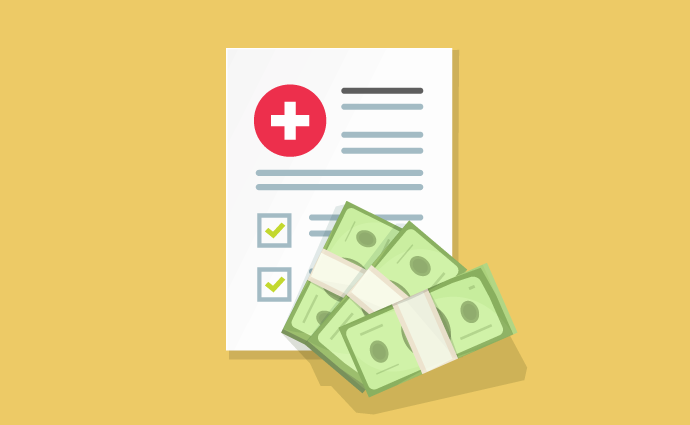Providers Charges Higher for Specialists with Most Surprise Bills
Provider charges grew faster than Medicare payment rates in emergency medicine and anesthesiology, at 6.7 and 4.4 percent annually from 2012 to 2017.

Source: Thinkstock
- Specialists who can surprise bill – emergency medicine and ancillary physicians – had significantly higher provider charges compared to Medicare payment rates versus other specialists, a new analysis from USC-Brookings Schaeffer Initiative for Health Policy showed.
Average charges have been growing notably fast relative to Medicare payment rates in emergency medicine and anesthesiology, at 6.7 and 4.4 percent annually on average from 2012 to 2017, respectively, the analysis found.
“Interestingly, though, while still at high levels relative to other specialties, radiology and pathology charges relative to Medicare rates have grown roughly in line with other specialties since 2012,” researchers wrote in the analysis.
Emergency medicine and ancillary providers are associated with higher levels of surprise billing because patients are unable to choose their provider when receiving certain services most commonly rendered by the providers. For example, patients may unknowingly receive care from an out-of-network provider furnishing emergency care or anesthesiology services at an in-network hospital.
In these cases, what providers charge matters. First, uninsured patients are often liable for the full charge, although there may be discounts offered, the analysis stated. Second, when a patient is treated by a provider outside of their insurer’s network, he or she can be billed at the provider’s charge amount. The insurance company only covers part of the bill, so the patient is required to take on the rest of the amount.
READ MORE: Bill Ending Surprise Medical Billing Would Save $7.6B by 2029
The analysis of federal data on provider charges and billing codes for Medicare providers from the USC-Brookings Schaeffer Initiative for Health Policy found that growth in the 80th percentile of provider charges relative to Medicare rates by specialty was most pronounced for emergency medicine and anesthesiology. These specialties had 40 percent growth over the five-year study period.
In addition, the ratio of mean charges to Medicare payment rates for emergency medicine and anesthesiology varied substantially state to state in 2017, the analysis stressed. For example, mean anesthesiology charges around the country varied from four times Medicare rates for the same services in Oklahoma to over 11 times in Wisconsin. And the ratio average emergency medicine physician charges to Medicare rates varied from 7.5 times Medicare rates in Texas to only 3.1 in Montana.
Surprise billing has been a major concern for the healthcare industry recently. Data from a 2018 Kaiser Family Foundation survey showed that 40 percent of patients had received a surprise medical bill in the last 12 months, and 67 percent reported that receiving a surprise medical bill is a serious cost concern.
Separate Health Care Cost Institute (HCCI) data showed that one in seven patients received an out-of-network surprise bill even when they believed they were receiving care in an in-network facility.
Lawmakers have proposed several bills during the 2019 to 2020 session of Congress in order to help the ongoing issue of surprise billing.
READ MORE: AHA: Fixed Reimbursement Rates Not a Surprise Medical Bill Solution
The challenge with these bills is that they don’t always successfully tackle surprise billing. An October study from the USC- Brookings Schaeffer Initiative for Health Policy showed that New York’s arbitration solution for surprise billing actually increased what payers and patients pay for out-of-network care, meaning federal solutions to surprise billing that include arbitration have the potential to increase patient costs across the country.
Recent research has pointed to a different solution used by California policymakers. In the Golden State, patients who receive out-of-network care are billed the in-network rate. Payers then reimburse at the physician’s average contracted rate (ACR), which is the local standard at 125 percent of the Medicare reimbursement rate.
A recent AHIP study found that there are 16 percent more in-network physicians in California since the passing of the state’s surprise medical bill law. This indicates that the benchmark price setting may not force physicians out of insurance networks, which is a concern among federal policymakers debating surprise medical billing solutions.
Payers and providers are split on which approach is more appropriate. Payers tend to favor benchmark rates for out-of-network care, while providers are more likely to advocate for an arbitration process.
Federal policymakers, however, are leaning toward the latter option. Bipartisan House and Senate committee leader recently announced that they reached a bipartisan, bicameral agreement on a method for preventing surprise medical bills, and that method is a new dispute resolution system that includes arbitration.
READ MORE: Physicians Hail New York’s Surprise Billing Law as a Success
“Americans who follow the rules and pay their premiums shouldn’t get stuck with a $50,000 bill because a hospital contracted a NICU to an out-of-network provider, or a $109,000 bill after being rushed to a nearby hospital for a heart attack,” Ranking Member Greg Walden (R-OR) said in the joint statement. “To put it plainly: Americans are sick and tired of being ripped off by surprise medical bills, and they want Congress to act. This announcement brings us one step closer to answering that call for action with bipartisan legislation to prohibit surprise medical bills and take the patient out of the middle.”
The policymakers urged a quick vote on the legislation. It is unclear if the solution will pass.
